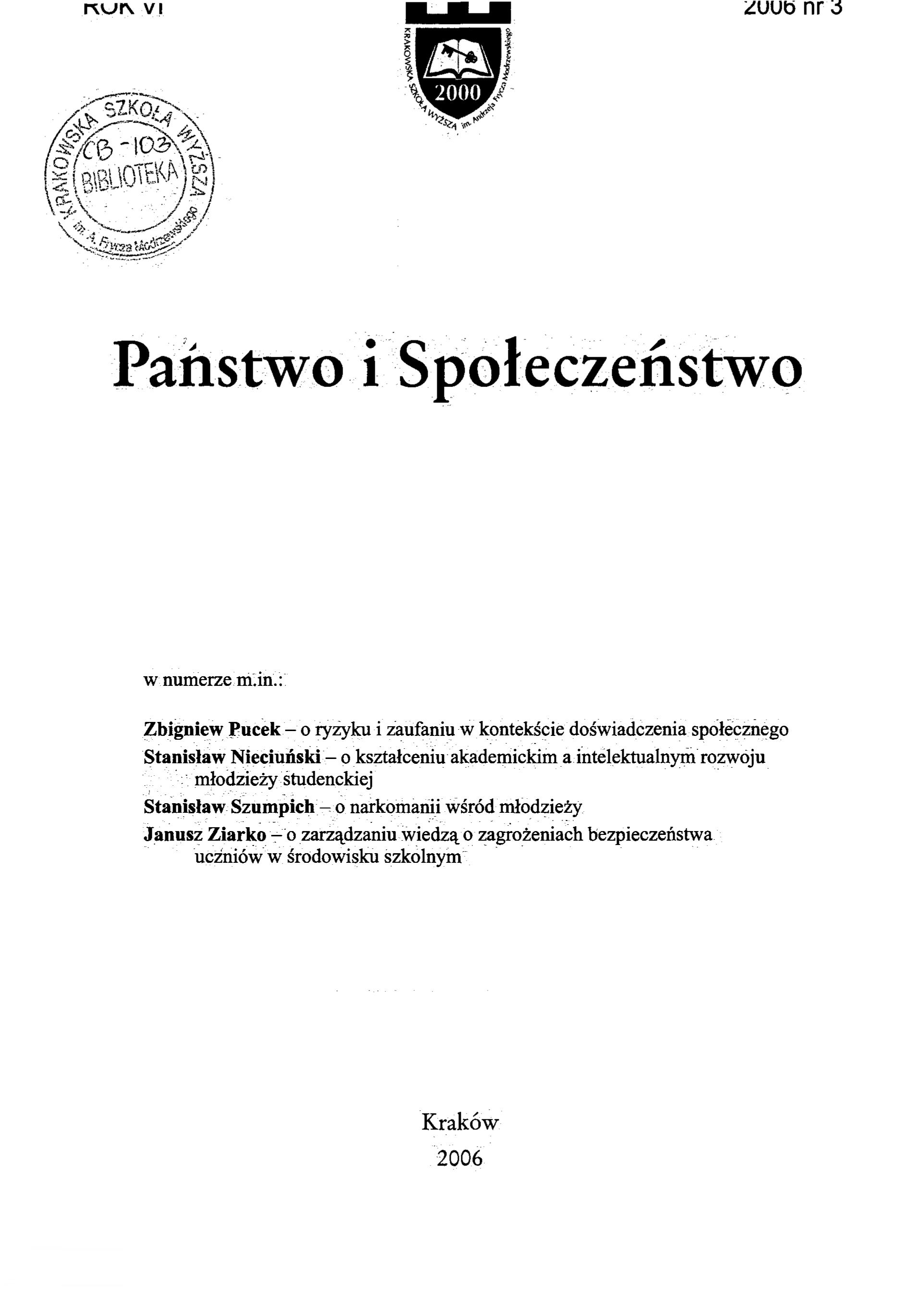
We kindly inform you that, as long as the subject affiliation of our 300.000+ articles is in progress, you might get unsufficient or no results on your third level or second level search. In this case, please broaden your search criteria.

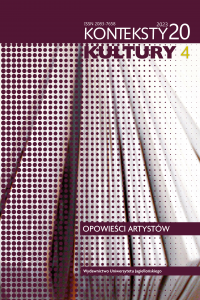
The article is dedicated to the reflexions on the manner, in which the opinions formed by Jozef Ignacy Kraszewski in his statements concerning his writing path and the desired development directions of his literary career that date back to the 30s of the 20th century correspond with the first novels of this author that were created at the preliminary stages of Romantic tendencies taking shape in the national prose fiction. The main focus of the article are Mister Walery and Big World of a Small Town whose literary profile delineated by the autothematic comments as well, was confronted with the critical reflection of the author included in such article as A Quick Look at the Path I Took (1832) or On Polish Novelists (1836).
More...
The article undertakes the attempt to describe Stanisław Lem’s views on the topic of the nature of poetry, literature and creative process. The process of this artistic auto-reflexion takes course in the shadow of the Holocaust and amidst the literary confrontation with poets of three generations that took place throughout the first few post-war decades. Crucial proves to be the confrontation with the contemporaries (in the context of reviews dedicated to Baczyński and Rożewicz from 1947 and 1948), which allows us to formulate two alternative models of literature and to declare oneself in favour of one of the sides. The memory of Holocaust, as well as post-war reading of Bolesław Leśmian’s and Ewa Lipska’s poetry results in changes to the juvenile aesthetic declarations. Unchanged however, remains the vitalist element already highlighted in 1945 in the Lem’s letter to Marian Hemar: “to write is to live”.
More...
The article attempts to synthesize the conservative views of Szczepan Twardoch from the early period of his work and to present their sources as well as the reasons for the later, radical change. The writer was inspired by conservative thinkers during his studies, mainly in the context of the French Revolution history. Under their influence, he began to contest development direction of the European civilization. His works from this period contain themes of the end of civilization, the fall of Christianity, and the struggle to preserve the cultural status quo. He also referenced the current political situation in Poland and the writers and philosophers representing a similar line of thought, primarily Joseph de Maistre and Ernst Junger. Intellectual maturing and the related aversion to dogmatism caused him to reject conservative views.
More...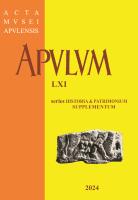
In the paratext of the Noul Testament de la Bălgrad [The New Testament from Alba Iulia], a special place is held by the so called “Șuma”, that is summaries of the chapters, supposed to orient the reader towards an easier understanding of that specific chapter and even to have a didactic role in the context of the 1648 translation. It was proven that the summaries translated in the text published in Alba Iulia were made by Theodore Beza who wrote them in Latin and first published them in the 1580 Greek-Latin New Testament edition (Geneva). This type of summaries will become a tradition, especially in the biblical translations in Transylvania after 1648, as they sometimes give indications about the filiation of the texts, as will be revealed in the present paper.
More...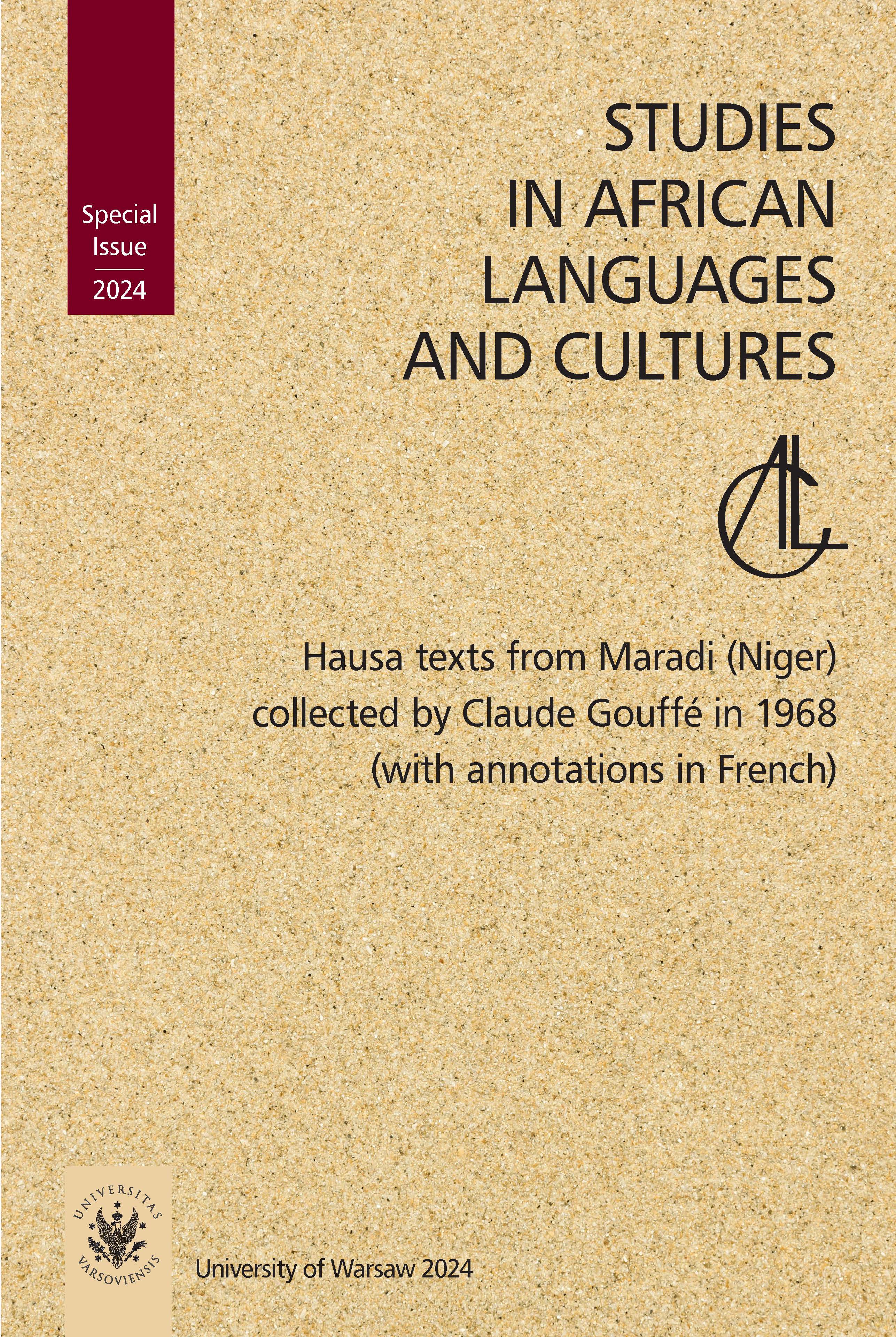
SALC Special Issue 2024 is documentation of the Hausa oral tradition from Niger. The texts, originally handwritten notes from field research, are the legacy of the outstanding French researcher of the Hausa language and culture, Claude Gouffé (1926-2013). The edition preserves the original spelling rules of the texts and comments on linguistic forms and content. In the presented edition, records of interviews with an informant using the Hausa dialect from Niger are presented in thematically separate sections: ethnographic texts, oral literature texts (stories) and praise poetry (kirari).
More...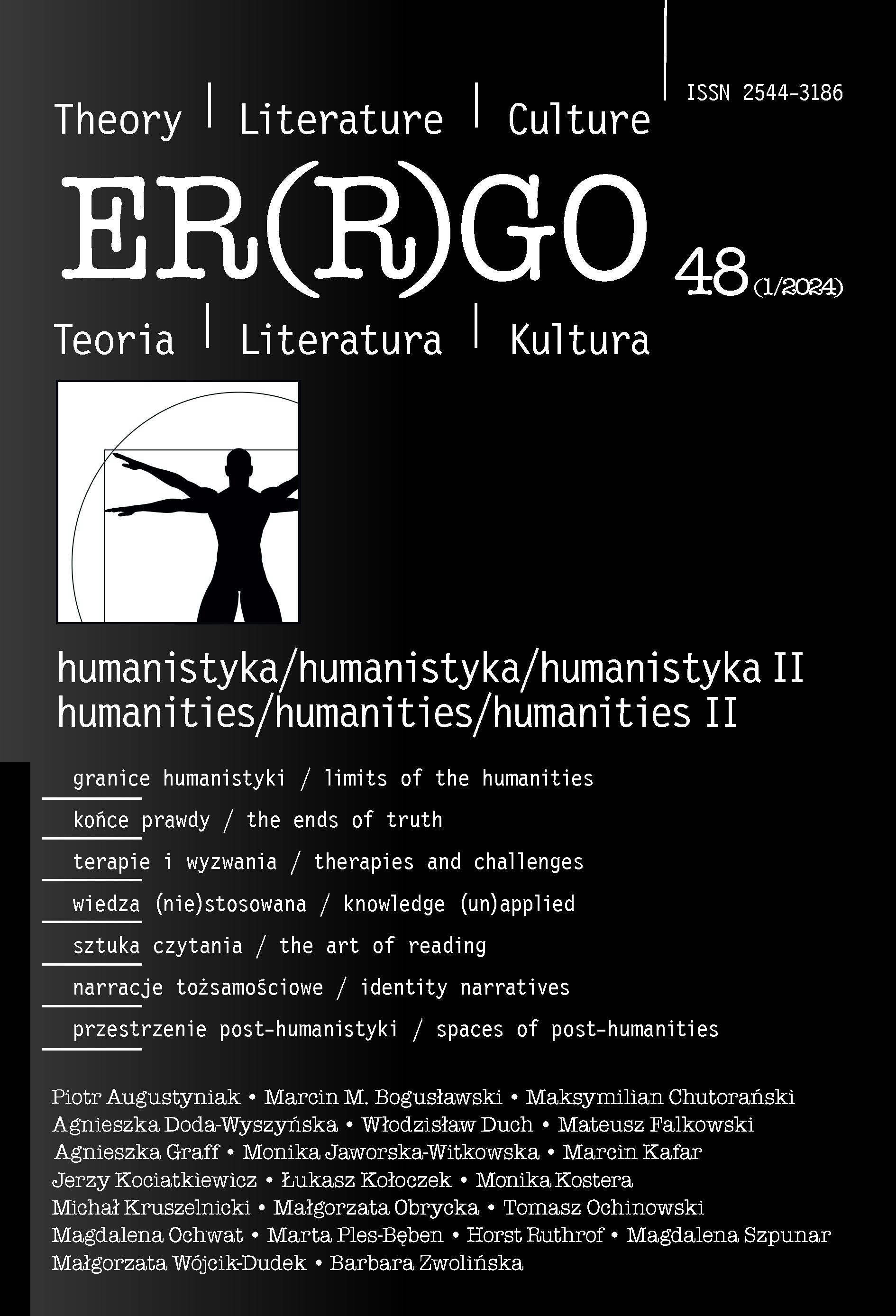
In the article, referring to the common experiences related to the pandemic, I reflect on the meaning of texts read in the “times of plague.” I ask the question, to what extent and what kind of reading helps to understand the traumatic events experienced by people (affecting the physical and mental state), what readers are looking for in novels, memoirs and journals concerning mass diseases, for example, plague and cholera. The review and analysis of these themes in selected works is accompanied by a question about the metaphorical meaning of the epidemic, symbolizing the diseases of civilization, such as: consumerism, materialism, thoughtless exploitation of natural goods, destruction of the environment, or, in general, the evil accumulating in subsequent wars. An important theme is also the one relating to the connection between eroticism with the plague–a trail important in T. Mann’s Śmierć w Wenecji and in G. G. Márquez’s Love in the Time of the Plague. Both fictional works, such as the novels mentioned above, as well as records of witnesses of history depicting the war as a plague, or referring, like S. Márai, to the journalistic style in describing the course of cholera in Italy, may inspire an attempt to answer the question to what extent readings describing the time of human trials in a situation of endangered humanistic values may be a signpost for future generations not necessarily feeling well in a culture without books.
More...
The article presents the problem of the tension arising between academic creativity and non-academic experiences of scholars. The individual subsections consist of approximations of expressive cases of scholarly auto/biographies that fall into the category of “consciously halved”– researchers whose works are situated at the intersection of what is personal with what is academic, giving it a specific cognitive tenor. The perspective adopted in the considerations is contained in the horizon of reflexive thinking, enabling the cultivation of hermeneutics of the Self in the area of “new humanities” as starting (and ending) with lived experiences of active human agents.
More...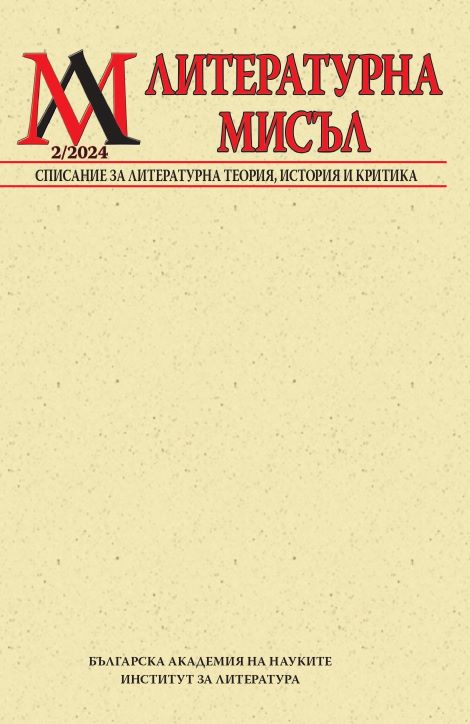
The paper is focused on two movies, dedicated to the life and deeds of the Bulgarian poet and revolutionary Hristo Botev. Chronologically, the first one – “Freedom or Death” (1968), was directed by Nikola Korabov – a film director, considered as a part of so-called classical era of the Bulgarian cinematography. The second one, entitled simply “Botev” (2022), was directed by Maxim Guenchev – a contemporary movie director, known with his history-based works. In different time contexts, both movies were met with considerable criticism by the audience and cinema professionals. The paper pays particular attention to the reasons why these films provoked so many pronounced negative reactions. The first movie was not accepted positively because of the political circumstances took place in 1968. Prague Spring affected the whole socialist block. Thus, the movie by Nikola Korabov was seen as deviating from the politically correct line of the Bulgarian socialism, so its screening was stopped by the ideological censorship. The interpretation of the main character and the way the history events were shown was regarded as diverting from the socialist canon. Consequently, the movie was prohibited for public display. “Botev” movie’s reception was not particularly warm as well. The audience was influenced by the director’s pro-Russian point towards the Russian aggression in Ukraine. The same attitude was shared by the main movie character from the screen. It should be taken into account that nowadays the national-populism is in constant raise, and the dictionary of the social dialogue, dedicated to the problems of the national identity, is radicalized respectively. Concerning the artistic language of the first movie, it is defined as a style mixture with no coherent intention, as involving unnecessary Biblical reminiscences, overexaggerated aestheticization with no plot motivation. Summarizingly, the movie was seen as a display of mannerism, unfitting the idea of the national hero’s concept in its socialist version. The movie “Botev” by Maxim Guenchev leaves an impression for amateur, informal event, targeted for close friends and the families of the cast. In conclusion, the image of Hristo Botev was not properly screened either in the socialist period or in the 21 century and more than 30 years after its collapse.
More...
The book “Inter armа. The Premonition of War in Czech Culture (1935–1939)” contains texts representative of both Czech culture and the dominant attitudes in European cultural space, chronologically framed by the Spanish Civil War and the eve of the Second World War. The compiler of the collection, author of the preface, and translator of most of the texts is Dobromir Grigorov. The selected literary testimonies – journalistic essays, poetry, fiction, and drama – contain important intellectual insights, ideological messages, and pose common contemporary questions about the changing interpretations of concepts such as socialism and democracy, and their divergent interpretations. A significant focus in a number of texts is the clash between the individual right to freedom and justice on the one hand, and collective identity on the other. Some of the authors such as Karel Čapek, Vladislav Vančura, and František Halas are well-known to Bulgarian readers, but others are almost or completely unknown – Gustav Winter, Emanuel Vajtauer, Otokar Fišer, Milena Jesenská.
More...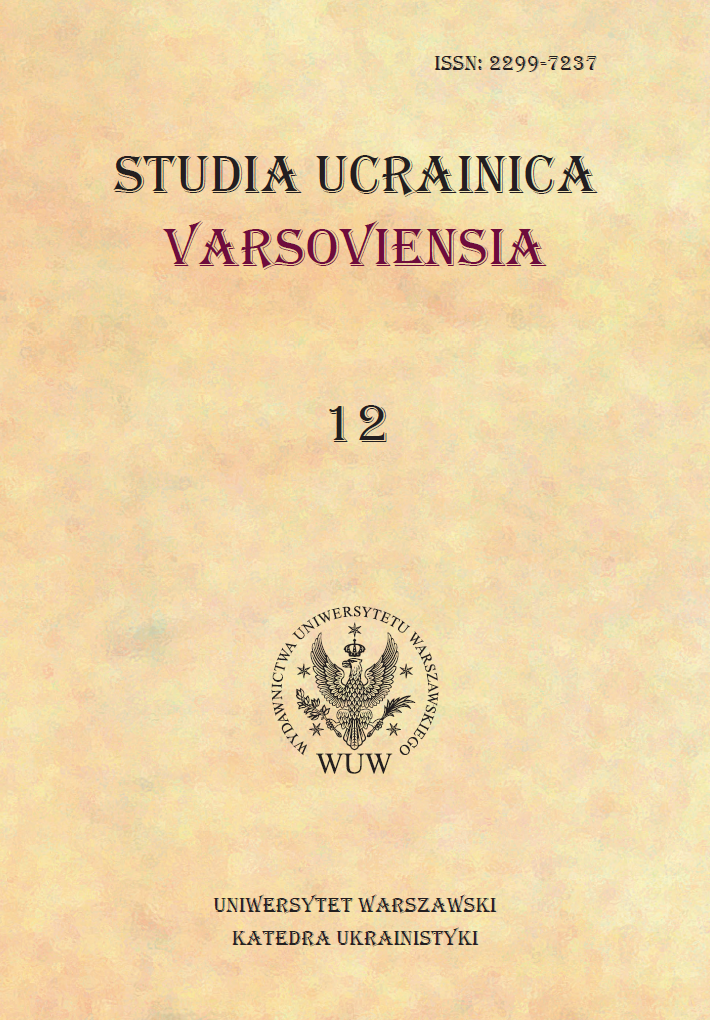
The report describes a scientifi c session of young scientists within the framework of the international cooperation between Lviv and Warsaw universities. The conference was divided into two parts, the first part took place on 25 May and the second one on 16 December 2023. This report presents the main organisers of the session and the participants as well as the topics of their presentations in both parts. The substantive content of each presentation is described consecutively with each of the authors.
More...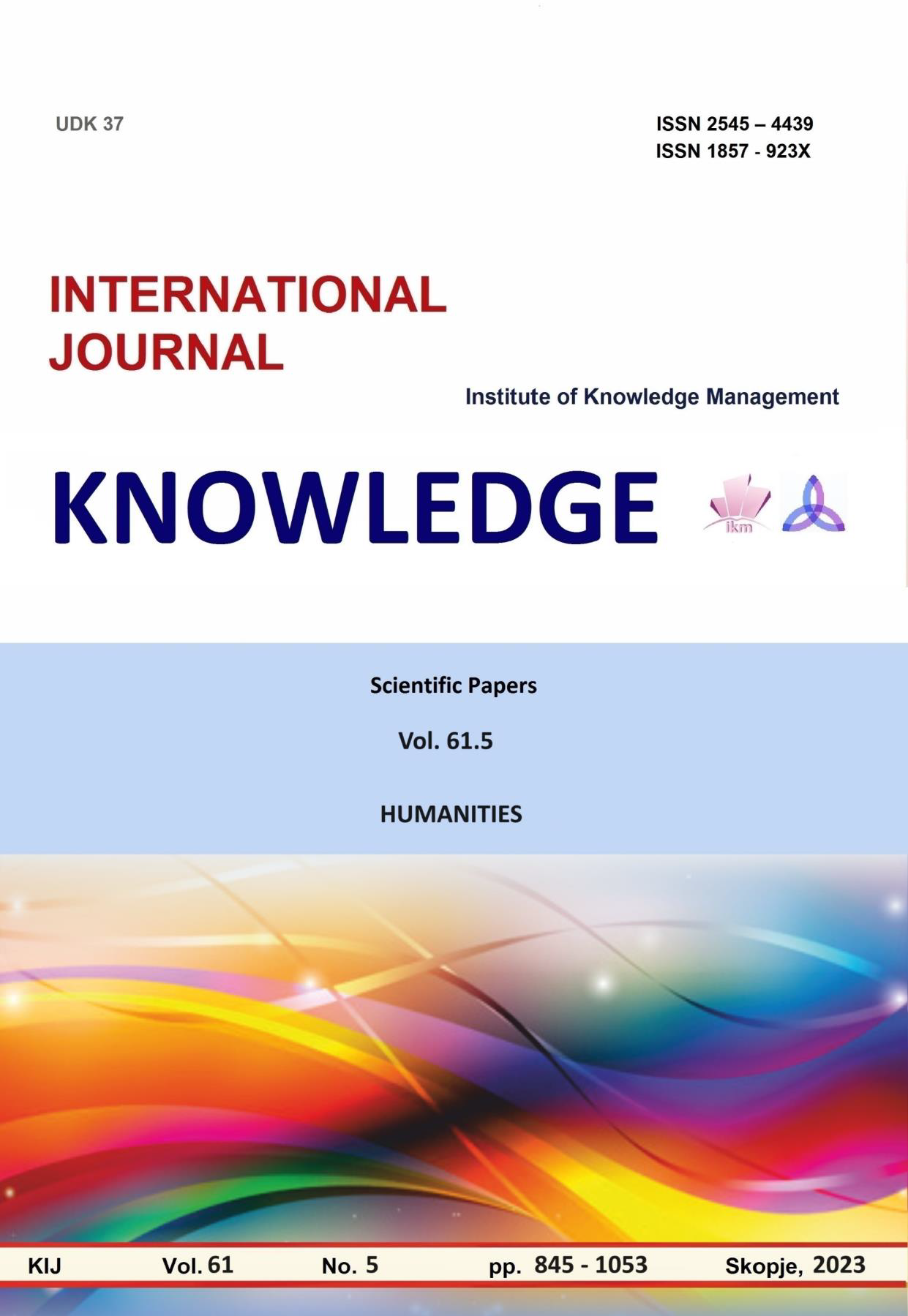
Gjergj Fishta, a prominent figure in Albanian literature, wrote epic, satirical, dramatic, lyrical, and publicistic works during the course of his career. He covered the journalistic side, which assessed aspects of Albania and its environment, in great detail. The majority of Fishta's prose works were released in periodicals and newspapers of the era, including “Hylli i Dritës” (1913) and “Posta e Shqypnis” (1916). The considerable work of Gjergj Fishta is a significant addition to Albanianology, theology, and cultural studies. Our inquiry will center on the newspaper article “The Riots of June 1924.” This writing in the Fishtian pen takes the form of a historical testimony, bringing historical events, facts, and real individuals in addition to its vast lexicon. As he noted, Gjergj Fishta, the demagogues of political and social life were the target of this article. In particular, the authorities, particularly those in Albania, the Assembly, the Parliament, specifically the high officials, starting with the prime minister, witnessed an undress spiritual and national, ignorance to the point of regret, extreme impudence, and nonsense motivated by greed, with serious repercussions for the Albanian world and its people. With this study, Gjergj Fishta aimed to uphold Albanian identity, the call to serve the country, and the need to modify the law to better suit Albanian society. At the end of the day, Gjergj Fishta wanted the best for his people and the preservation of the Albanian identity based on the code of tradition, just like many other patriots, intellectuals, and albanologists.
More...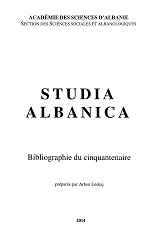
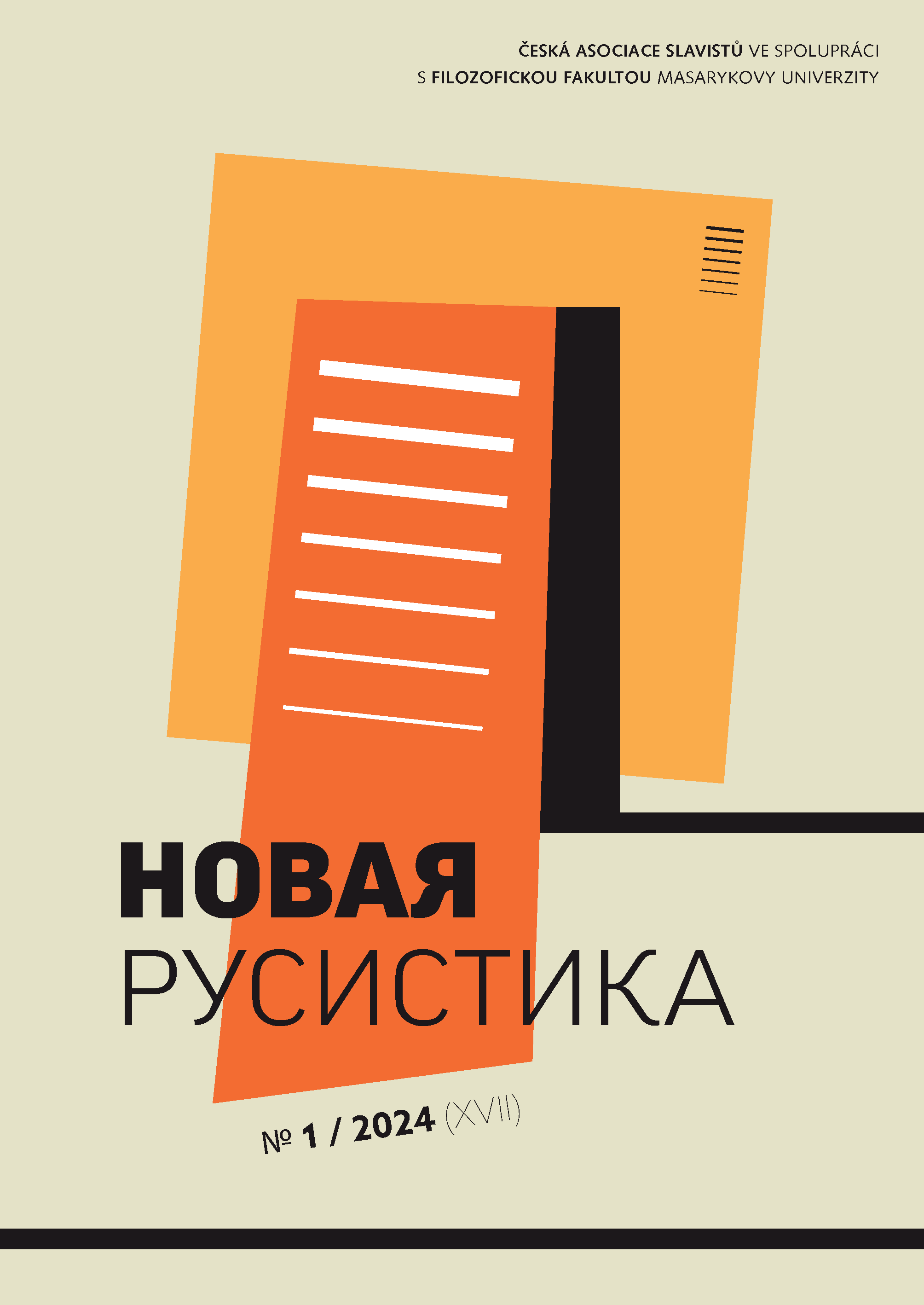
The article is devoted to the study of the figurative designations heart and soul. For analysis, the author uses metaphors, comparisons and nominal periphrases taken from the works of Russian poets of the 19th–20th centuries. The concept of a figurative field is substantiated, its composition is established, and its system relationships are described. The article considers stable images and ways of their reinterpretation in a number of idiostyles and traces the evolution of tropes. The continuity of some images (fire; water bodies; birds etc.), the weakening and fading of traditional semantic connections (for example, heart/soul — temple) and the emergence of new ones are noted. Semantic connections, only outlined in the poetry of the 19th century, become widespread in the 20th century (heart/soul — music; flora; human; animals, insects, fish). The 20th century sees the emergence of a figurative likening of the soul/heart to a dwelling, a home. The poetry of the 20th century is characterised by reduced associations and depoeticisation of traditionally lofty images.
More...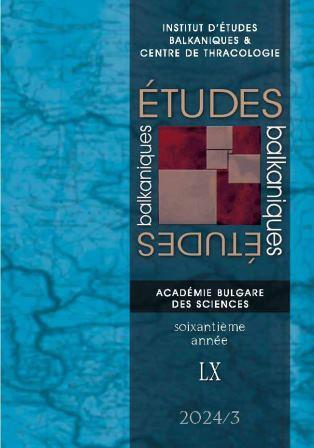
The article aims to analyze and summarize the translation, critical and scholarly reception of Vesna Parun’s lyrical work in Bulgaria with the intention to complement or detail the existing reception studies in the Bulgarian scholarly field. The focus placed on the forms of presence in the Bulgarian literary space outlines as a field of research the translation and critical activity until and after 1989). Both the earlier translations and the new ones, which are essential in constructing or expanding the idea of her poetry, are object of commentary. Modern approaches to the presentation of Parun’s poetry – publications in specialized periodicals, in anthologies, etc., are examined in terms of publication strategies which lead to different contexts of perception. The existing scholarly studies, presenting the varied scholarly perspectives (literary-historical, interdisciplinary, reception studies) to the work of Vesna Parun have been analyzed as an important factor for the formation of the reception image.
More...
The paper examines Vesna Parun’s translation work from an intercultural perspective, highlighting her role as a true intercultural translator who belonged to and connected Bulgarian and Croatian cultural spaces and literatures. Parun’s success in translating Penjo Penev’s works is attributed to her deep immersion in Bulgarian language and culture, as well as her poetic aptitude and mastery of poetic traditions. Parun’s translation skills were bolstered by her interpretative abilities, enabling her to understand both the original text’s context and its new reception context. Her familiarity with the socio-political and cultural milieu of the time, as an active participant, further enhanced her translations. The paper asserts that Parun adeptly navigated the various intra- and extra-linguistic elements influencing literature and its translation, solidifying her legacy as a masterful translator of poetry.
More...
Since there are some important similarities as well as meaningful differences between the poetic oeuvres of the selected authors, the paper provides a comparative and a contrastive analysis of selected poems by Vesna Parun and Blaga Dimitrova. It focuses on a relationship between idealism with “absolutist” tendencies, insistence on perfection and on the ideal as a way of coping with negativity. Lyrical subjects in the poems are conceived as completely open to the unending work of desire. The lyrical subject in the poems by Parun is much more sensual, while Dimitrova’s one shows a strong tendency toward reflectiveness and abstraction. Their idealism is usually articulated through traditional symbols, such as birds, stars and the idealised topoi of childhood and nature, with love being their obsessive theme. Such a constellation is a basis for duality of the lyrical subject placed between the ecstatic projections and a tragic decomposition. Self-transcendence through love is the main ideal (that) the lyrical subject hopes to achieve, whereas its other side is the uncompromising tragic self-destruction the subject chooses so as to preserve the ideal from its loss and from the threatening meaninglessness.
More...
The article features the Bulgarian trace in the works of the Croatian poet and her creative contacts with Bulgarian artists and literary figures in the 1960s. This period was a turning point in her work. Among her most significant friendships with men of letters was that with the great Bulgarian poet and satirist of the regime Radoy Ralin (1923 – 2004). Vesna Parun’s letters constitute an authentic testimony to her creative and intellectual views, as well as to a rich spirituality that enriched both Croatian and Bulgarian literature with its lyrical and essayistic pictures of the period.
More...
The article features the Bulgarian period in the works of the great Croatian poet Vesna Parun, during which she befriended some of the most prominent artists and intellectuals in Bulgaria of that time. Bulgaria proved to be a major inspiration for the poet, but also a source of pain because of the harsh life trials she ended up facing. The period was very prolific for her. In Bulgaria she wrote not only her poetry collection The Wind of Thrace, but also magnificent essay and travelogue texts, while at the same time actively contributing to the translation of her poetry into Bulgarian. Her essays on Bulgarian poetry are particularly valuable insights of a talented and erudite artist, who sheds light not only on the poetic but also on the political processes in those years of ideological bans and creative freedom that was so hard to uphold.
More...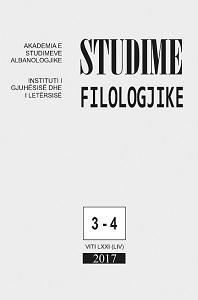
After the Albanian Communist Party came to power, the Beauty, as an aesthetic category, received less attention in front of the new mission which literature held on. The faithful reflection of reality was not enough for the new art. As well as the simple mimetic production was not required. The purpose of the new literature was “the true reproduction of typical characters in typical circumstances,” as F. Engels suggested. This meant that the production of new aesthetics in this case, as E. Dobrenko noticed, comes through the re-adaptation of the Marxist equation to workers "Commodity – Money – Commodity" to "reality-realism socialist-reality". The refutation of the Beauty from the new proletarian art, which had appeared also in the Albanian’s literary horizon, did not come as a result of any rejection of this concept by the postmodernist factor. The negation of the Beauty came due to the involvement of realist socialist literature in the same structure with propaganda and ideology. The first group of Albanian authors of the 1945s-1950s, considered the Beauty as a true and exact reflection of the reality. While for the second group, of the 1960s, the idea of describing reality was converted into the idea of transforming the reality by literature. While the first group had simply created a simulation of reality, as a reflection/imitation of a process, that actually takes place in life, the authors of the second group had created a form of realism that describes imaginary realities, future and expected realities, which produced a simulacrum, as J. Baudrillard named the practice. The simple question is: did realism exist in the socialist realism method? The debate on realism in the Albanian literature after the 1950s, developed between “traditionalists” and so-called “modern” poets. Without any new stylistic researches, the poets of the first group reflected the heroism of the WWII and the experiences of the first stages of the motherland's reconstruction. The poets of 1960-s refused to collect simplified impressions from their metric museum and also the stylistics of the ancestors. They opposed as an “avant-garde demiurge”. Their poetry addresses to the skies more than to the earth. It retains the “messianic inspiration” of the messengers on the new (communist) planet, which speaks about the future to the mass. This generation of poets did not take over the reflection of the daily life. They offered the future of Albania, but still inherent in the future of socialism. The Albanian poetry of 1960s inherits also some of the formal features of Russian futurism and some other points from the Italian Manifesto of Futurism. This is reflected in the launched of city subject, cosmos theme, technological-industrial dreams, metropolitan future and the refutation of any past legacy. In formal terms it seems that some similarities are found between socialist realism and the futurist movement, but, more than decades later on, their compliance are noticed mostly in rhetorical fields. The opposition between “traditionalists” and “modernists” in Albanian literature was not included just in aesthetic categories, but for literary influence and territories too. This war, which began as a struggle between “classical rhyme” and “free verse”, did not ends only on expressional terms. It touched the thematic issues too. One such it among others was the theme of Eros, the love poetry. It began killing the sentimental hero of the years 1945s-1950-s, to replace him with a militant Eros of poetry of the 1960s, which was rarely a lyric one. Despite the differences, the poetry of those years remained a diligent implementator of the utopian project and the poets as “soul engineers”, which directed the reality toward that particular form of realism that did not respond to reality, but to socialism. This process treated the Socialism as an aesthetic category, with the same equivalence as the Beauty itself.
More...